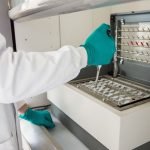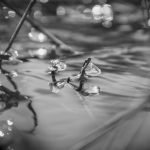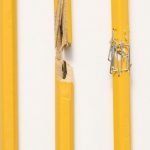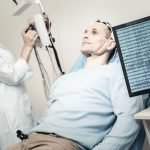The Physiology of Hearing Loss After Loud Sounds
Node Smith, ND
When we listen to loud music, or a fire engine drives by we often experience impaired hearing for a short time afterward. Researchers at Linköping University have uncovered the underlying mechanism for why this happens.
Underlying mechanism of momentary hearing loss after loud sounds
When someone experiences a loud noise and subsequent hear loss, it is likely due to changes in the inner ear, researchers have found. “We have discovered that a tiny structure in the cochlea known as the tectorial membrane plays an important role in this process, by acting as a storage depot for calcium ions. These calcium ions contribute to regulating the function of the sensory cells”, says Anders Fridberger at the Department of Clinical and Experimental Medicine, who has led the study which is presented in the journal Proceedings of the National Academy of Sciences, PNAS.
The inner ear
Calcium ions, which are calcium atoms with a positive charge, play a key role in the processes that make hearing possible. The conversion of sound waves to nerve impulses takes place in the inner ear, also known as the cochlea, which looks like the spiral shell that some snails have. The cochlea contains many sensory cells, which detect sounds and generate signals that are passed on to the brain.
Scientists investigated calcium ion concentration in the inner ear
Previous research has shown that the fluid that surrounds the sensory cells in the cochlea has a low concentration of calcium ions. There were, however, questions surrounding this, because sensory cells that are placed in fluids with the natural level of calcium no longer work normally. The scientists at LiU have investigated the calcium ion concentration in the inner ear of guinea pigs, which is very similar to the human ear. By fluorescently labelling the calcium ions, the researchers discovered that a membrane that lies on top of the sensory cells, the tectorial membrane, has a much higher concentration of calcium ions than the surrounding fluid. The membrane seems to function as a store, such that the sensory cells are surrounded by higher levels of calcium ions than previously believed.
Inner ear of guinea pigs studied due to similarities in the human ear
When the scientists added a substance that mops up calcium ions, the sensory cells ceased to function. In the next step, they exposed the inner ear to noise levels that correspond to those experienced at rock concerts, which had the same effect.
“When we expose isolated inner ears to loud noise in the lab, the level of calcium in the tectorial membrane falls, and the sensory cells cease to function. After a while, however, the calcium ion concentration returns to its previous level, and the sensory cells start to function again”, says Anders Fridberger.
Tectorial membrane and why it’s necessary for hearing
Until now, scientists have thought that the tiny membrane has a mainly mechanical function, but the discovery made by the LiU researchers suggests that the tectorial membrane may play an important role in regulating hearing by storing calcium.
“We knew that the tectorial membrane is necessary for hearing, and that it must be intact and correctly located, but it has been unclear why damage to this membrane contributes to impaired hearing”, says Pierre Hakizimana, one of the researchers behind the study.
Source:
 Node Smith, ND, is a naturopathic physician in Humboldt, Saskatchewan and associate editor and continuing education director for NDNR. His mission is serving relationships that support the process of transformation, and that ultimately lead to healthier people, businesses and communities. His primary therapeutic tools include counselling, homeopathy, diet and the use of cold water combined with exercise. Node considers health to be a reflection of the relationships a person or a business has with themselves, with God and with those around them. In order to cure disease and to heal, these relationships must be specifically considered. Node has worked intimately with many groups and organizations within the naturopathic profession, and helped found the non-profit, Association for Naturopathic Revitalization (ANR), which works to promote and facilitate experiential education in vitalism.
Node Smith, ND, is a naturopathic physician in Humboldt, Saskatchewan and associate editor and continuing education director for NDNR. His mission is serving relationships that support the process of transformation, and that ultimately lead to healthier people, businesses and communities. His primary therapeutic tools include counselling, homeopathy, diet and the use of cold water combined with exercise. Node considers health to be a reflection of the relationships a person or a business has with themselves, with God and with those around them. In order to cure disease and to heal, these relationships must be specifically considered. Node has worked intimately with many groups and organizations within the naturopathic profession, and helped found the non-profit, Association for Naturopathic Revitalization (ANR), which works to promote and facilitate experiential education in vitalism.
Node Smith graduated from the National University of Natural Medicine (NUNM) in 2017, and is currently licensed as a naturopathic physician in Oregon and working towards becoming licensed in Saskatchewan, Canada as well.










